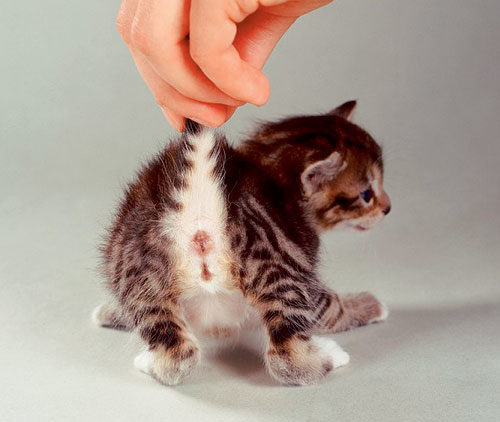Congratulations for being a purrent! Is it a girl or a boy? Are you sure?
Accurately determining the sex of a kitten is important, and not just to avoid naming mishaps. The likelihood of some health and behavioral problems occurring varies with an individual’s sex. For example, while urinary tract disease is common in all cats, males are at a much higher risk of developing a potentially fatal urinary tract blockage in comparison to females.
Determining the sex (or “sexing” as it is often called) of a kitten isn’t as difficult as you might think, the biggest hurdle in your investigation will probably be keeping kitty calm and unperturbed as you examine his/her posterior.
Let’s take a look at the best way for pet parents to determine, or confirm, the sex of their kittens.
Inspecting their genitalia
If your cat is 8 weeks of age or older, the procedure is fairly straightforward. Pick a time when your cat is most likely to be calm—after a meal is a good bet. Sit on a chair and lightly hold your cat on your lap however he or she feels most comfortable. Gently lift the tail and take a look at your cat’s rear end. Focus on two things:
- The distance between the anus and the genital opening.
- The shape of the genital opening.

Notice that the distance between the anus and the opening to the penis in males is bigger in comparison to the distance between the anus and the opening to the vulva in females. Also, the penile opening looks like a circle while the vulvar opening is more of a line.
Here are two features NOT to use when sexing a kitten. The penis itself is not normally visible in male cats and can be very hard to feel, especially in young kittens. And while the testicles should, in theory, be palpable within the scrotum (lying in that space between the anus and penile opening), they may be too small to identify. Also, many kittens are neutered at a very young age these days. Therefore, a lack of testicles doesn’t necessarily mean your kitten is female.
Coat Color
Did you know the color of your kitten may give you a clue to its gender? Almost all (but not ALL) calico (black, white, and orange) and tortoise shell (black and orange) kittens are females. Also, more orange/ginger kittens are male than female.
Once a cat or kitten has been successfully sexed, unless the owner is a cat breeder, it’s important to find a good vet who can spay or neuter this pet.
If you have any doubts as to your cat’s sex, ask your veterinarian to take a look for you. And if you end up being surprised by the answer, have no fear. Cats of both sexes make wonderful, loving companions.


